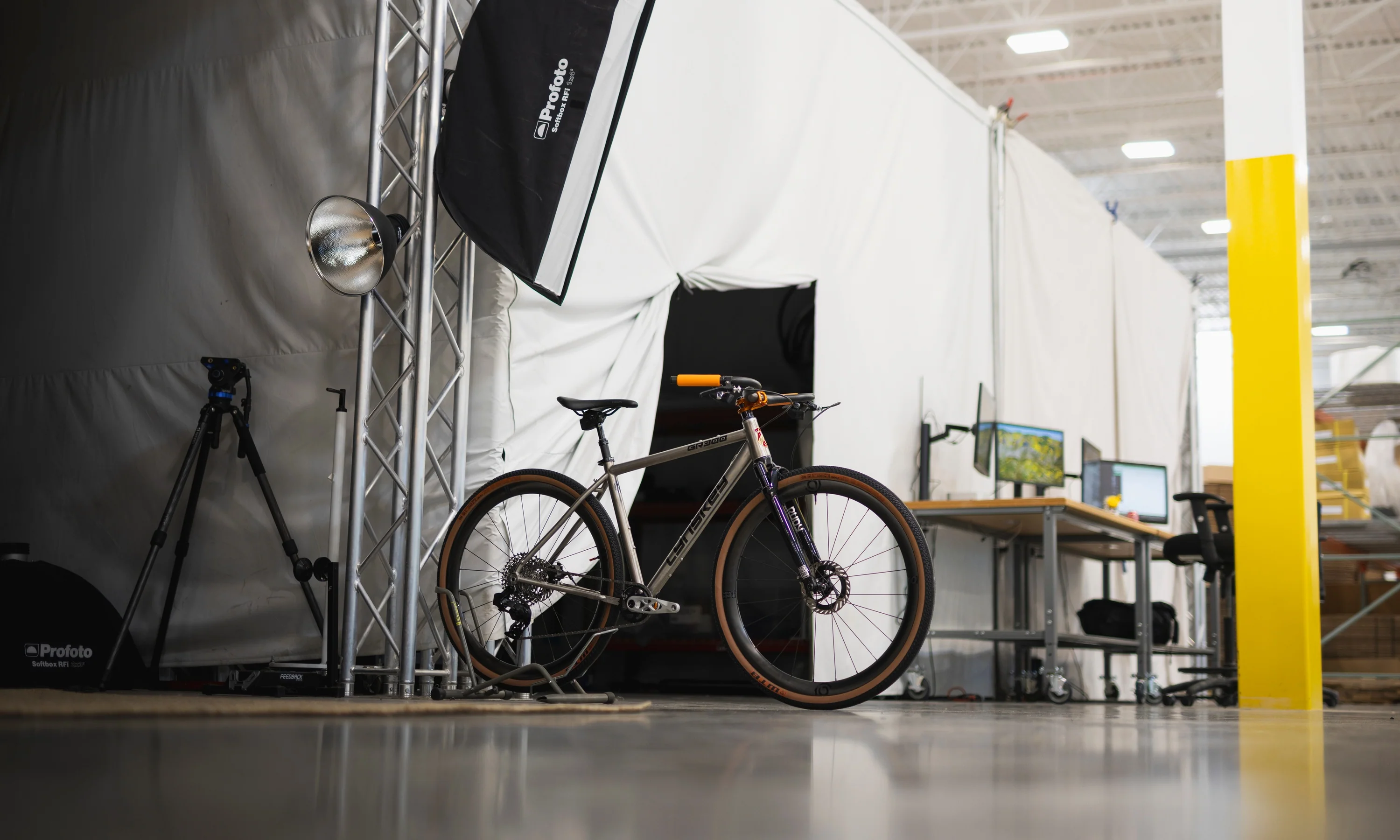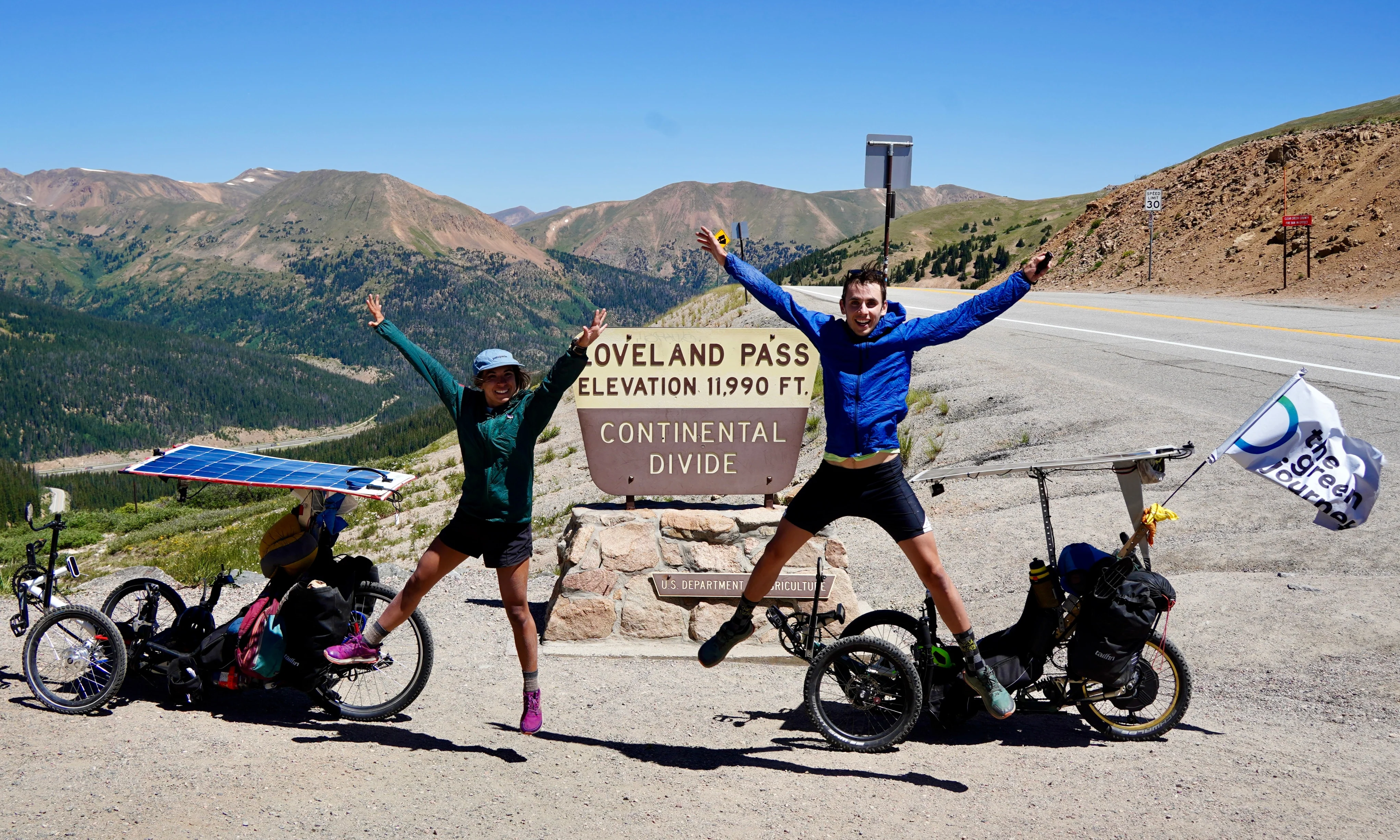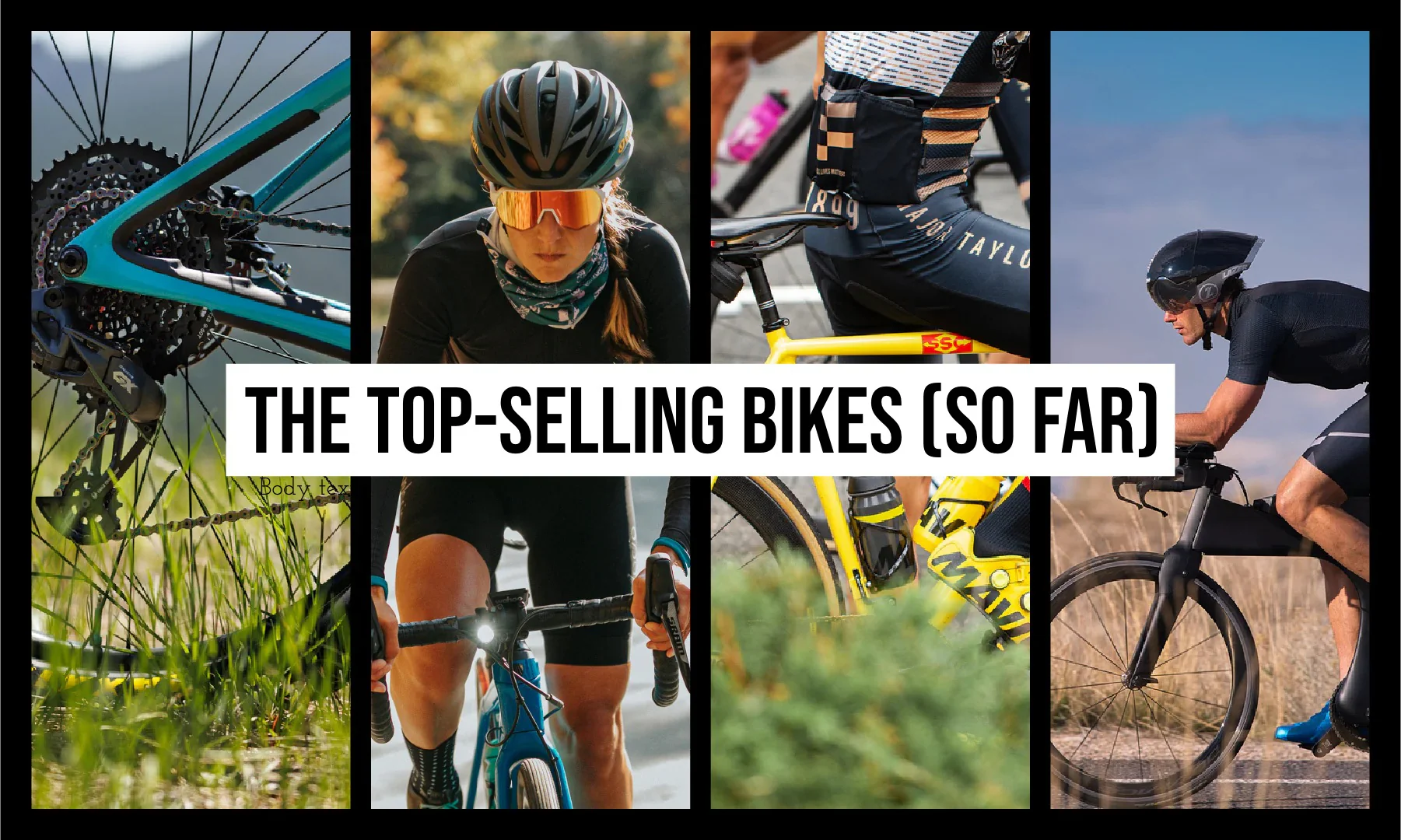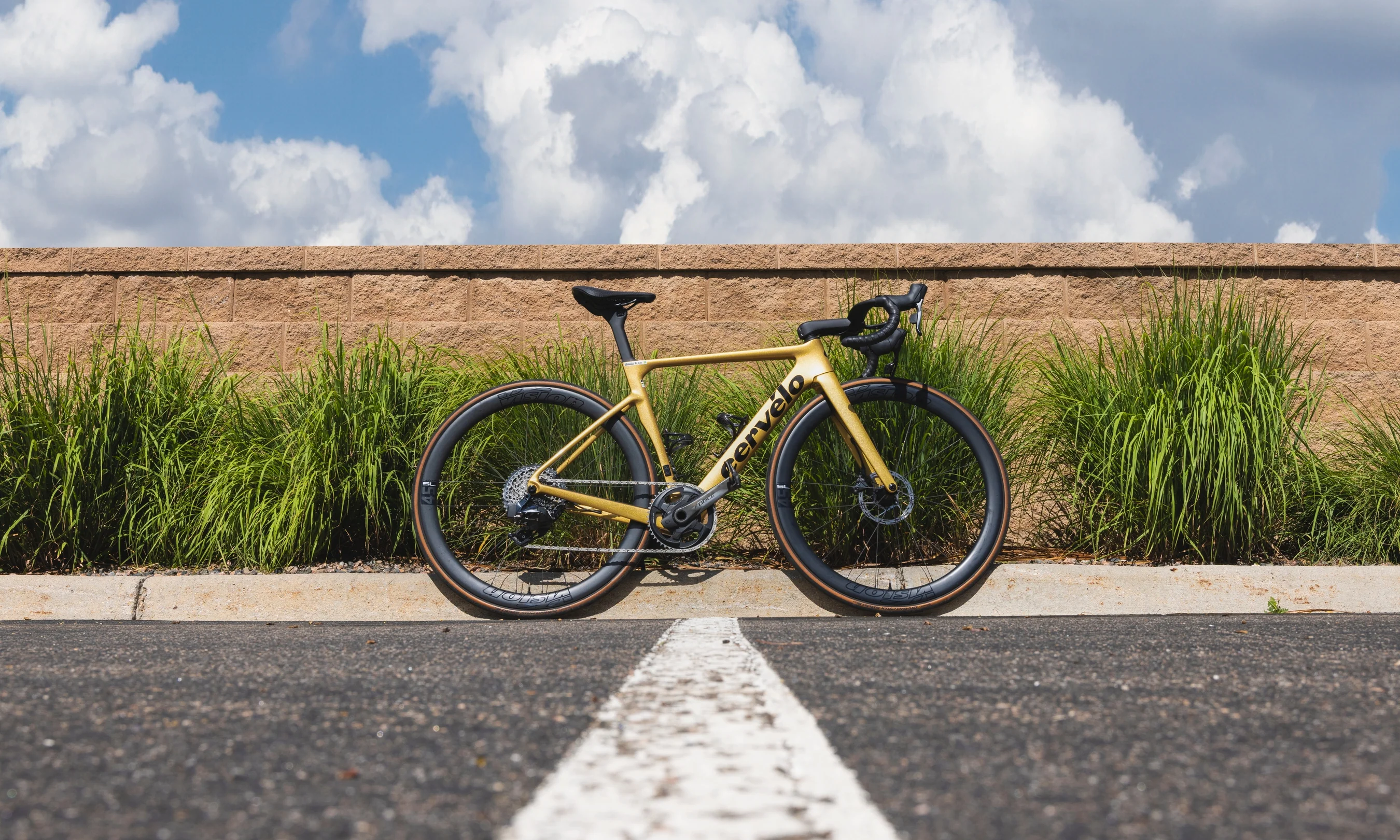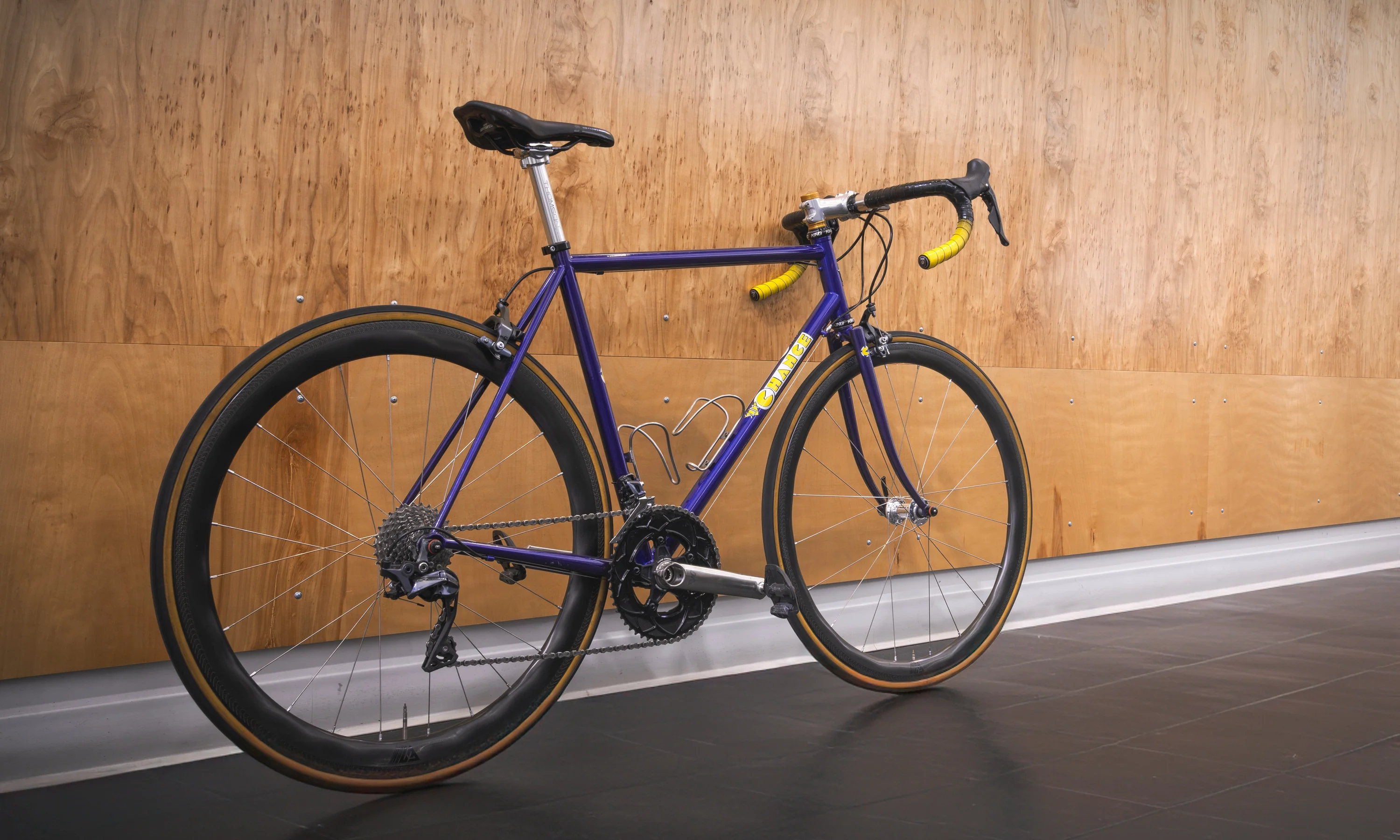As a devout analog cyclist, I was skeptical that the lightweight E-bike category would alter my perspective. After many months behind the bars of the Orbea Rise H15, I’m an emphatic convert on a crusade to spread the word of pedal assist.
Truth be told, I’ve had several smile-inducing rides on E-bikes — whether it was ripping Italian singletrack in the Dolomites, surfing talcum powder dust outside of UC Santa Cruz, or taming the elevation of Jefferson County, it is undeniable that E-bikes are a blast to ride.
That said, I viewed my previous E-bike experiences differently than that of my “acoustic” adventures. The power to climb seemingly anything on an E-bike was glorious, however, the descents felt muted, less playful, and more like I was along for the ride. I missed the lively nature of a much lighter analog bike where I was the pilot rather than the passenger.
 It’s comforting to know that I wasn’t the only one looking for a more authentic experience. A new category of lightweight, low-power E-bikes emerged, promising a more natural ride quality, a more playful feel, and a more svelte silhouette. Considering that the bike gods magically addressed all my concerns, I was compelled to test the category’s most intriguing offering — the Orbea Rise
It’s comforting to know that I wasn’t the only one looking for a more authentic experience. A new category of lightweight, low-power E-bikes emerged, promising a more natural ride quality, a more playful feel, and a more svelte silhouette. Considering that the bike gods magically addressed all my concerns, I was compelled to test the category’s most intriguing offering — the Orbea Rise
My Custom Orbea Rise Build
I’m unapologetic when it comes to customizing my bikes and the Rise would be no different — stock is for scrubs. Knowing that the spec was somewhat irrelevant, and the 60 Nm Shimano EP8-RS motor (which was designed specifically for this bike) is shared across the models, I focused on frame material and battery life.

Orbea Rise H30 20mph Mountain E-Bike - 2022, X-Large
$4844.93
My decision fell between two models: The H15 version, a hydroformed alloy frame equipped with a 540wh internal battery that retails for $6799, or the M20 version, a lighter carbon frame outfitted with the smaller 360wh battery to save additional weight and retails for $7399.
 The advanced hydroformed aluminum frame leaves little to be desired.
The advanced hydroformed aluminum frame leaves little to be desired.
The M20 saves a few pounds over the H15, but the additional battery capacity and durability of an alloy frame influenced my decision for the H15. Furthermore, the hydroformed alloy is a work of art, as the welds are inconspicuous, mimicking the clean lines of its carbon brethren.
With an XT/SLX build and Shimano’s underrated M6100 brakes, the H15 is the perfect foundation at a relatively affordable price. The next step was to swap out the 150mm/140mm Fox Performance suspension for a superior Ohlins offering.
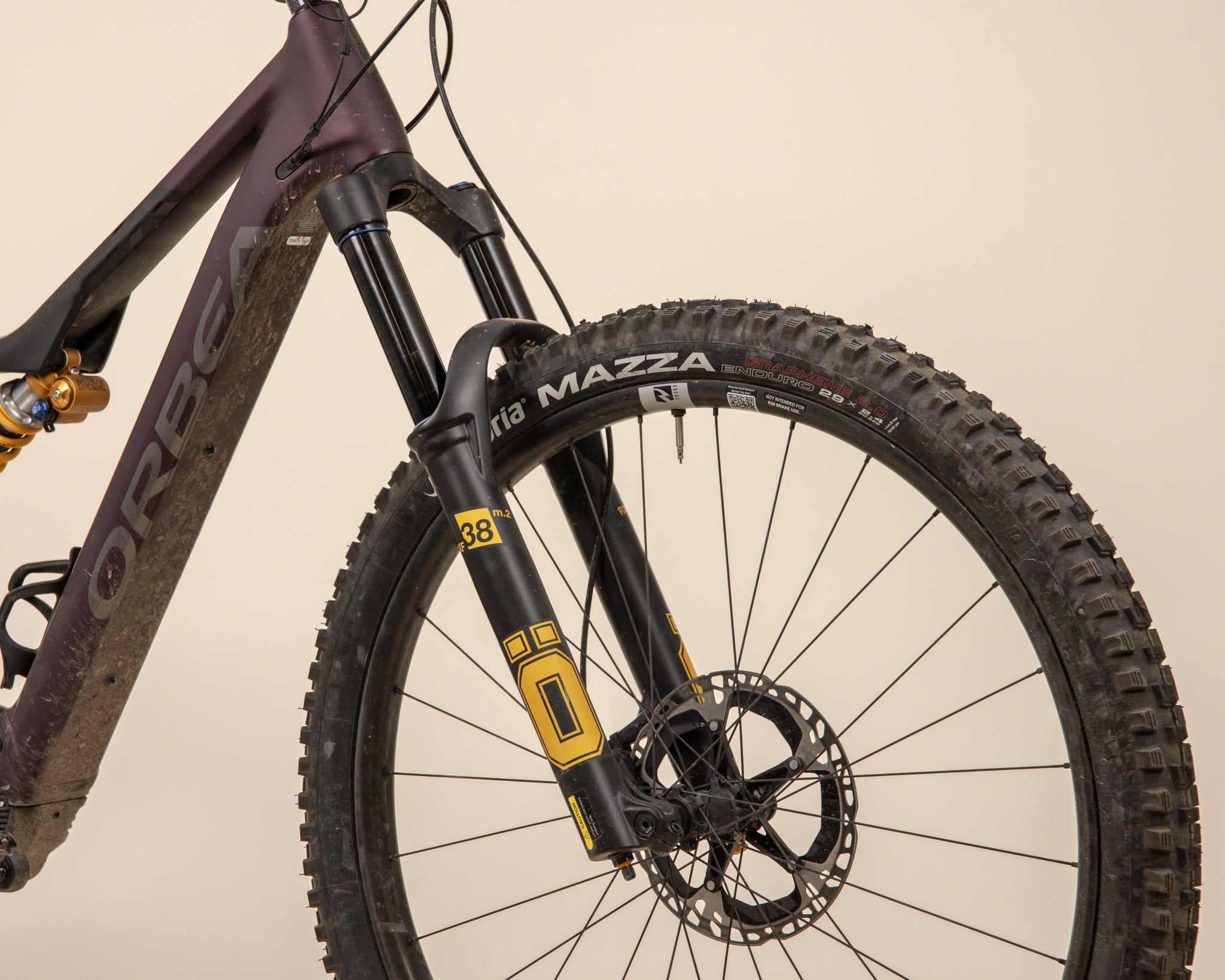

Öhlins RXF38 m.2 29'' Air Fork Boost 44mm Offset
$791.99
I chose the robust RXF38 m.2 fork for its tunability, hardy stanchions, and athletic performance. I bumped up the travel to a rowdy 160mm which slackened the head angle another .5°. As for the shock, I prefer the linear feel of a coil keeping the rear end planted at speed. Ohlins’ highly capable TTX22 m.2 was the most fitting upgrade.
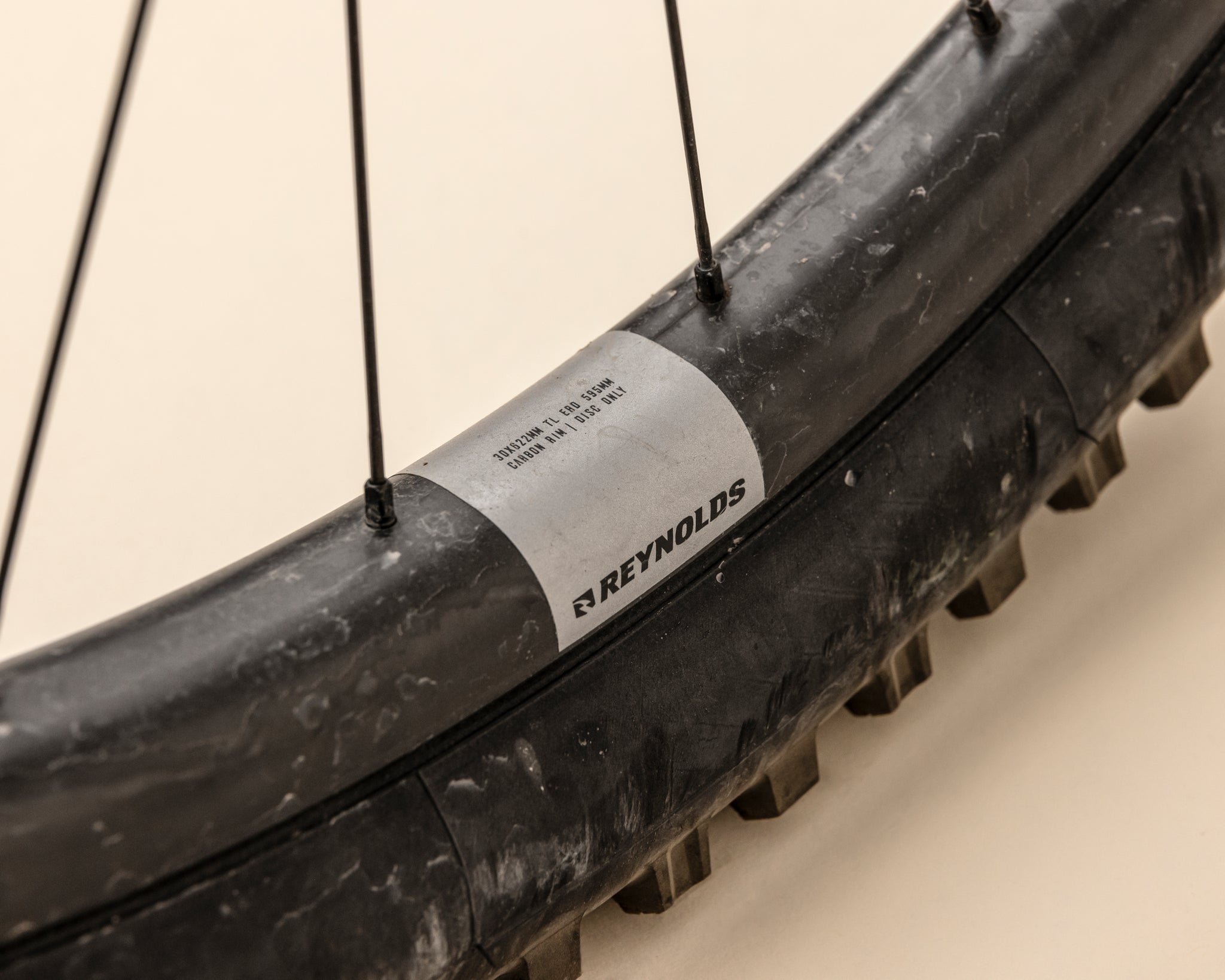

Reynolds TR 309 E Carbon Tubeless 29" Wheelset
$445.99
The additional weight and torque from an E-bike can wreak havoc on brakes and wheels. Knowing this, I upgraded to a 203mm XT front rotor and reached for Reynolds carbon TR 309 Enduro wheelset. While most wheel brands outsource either the hub or rim, Reynolds engineers the wheel as an entire system in order to optimize performance and durability. Selecting a 28h spoke count seems like a risky move considering the added stress of the E-bike, but their system design and lower rim profile (20.5mm) are tailored to provide both lateral stiffness and improved compliance.
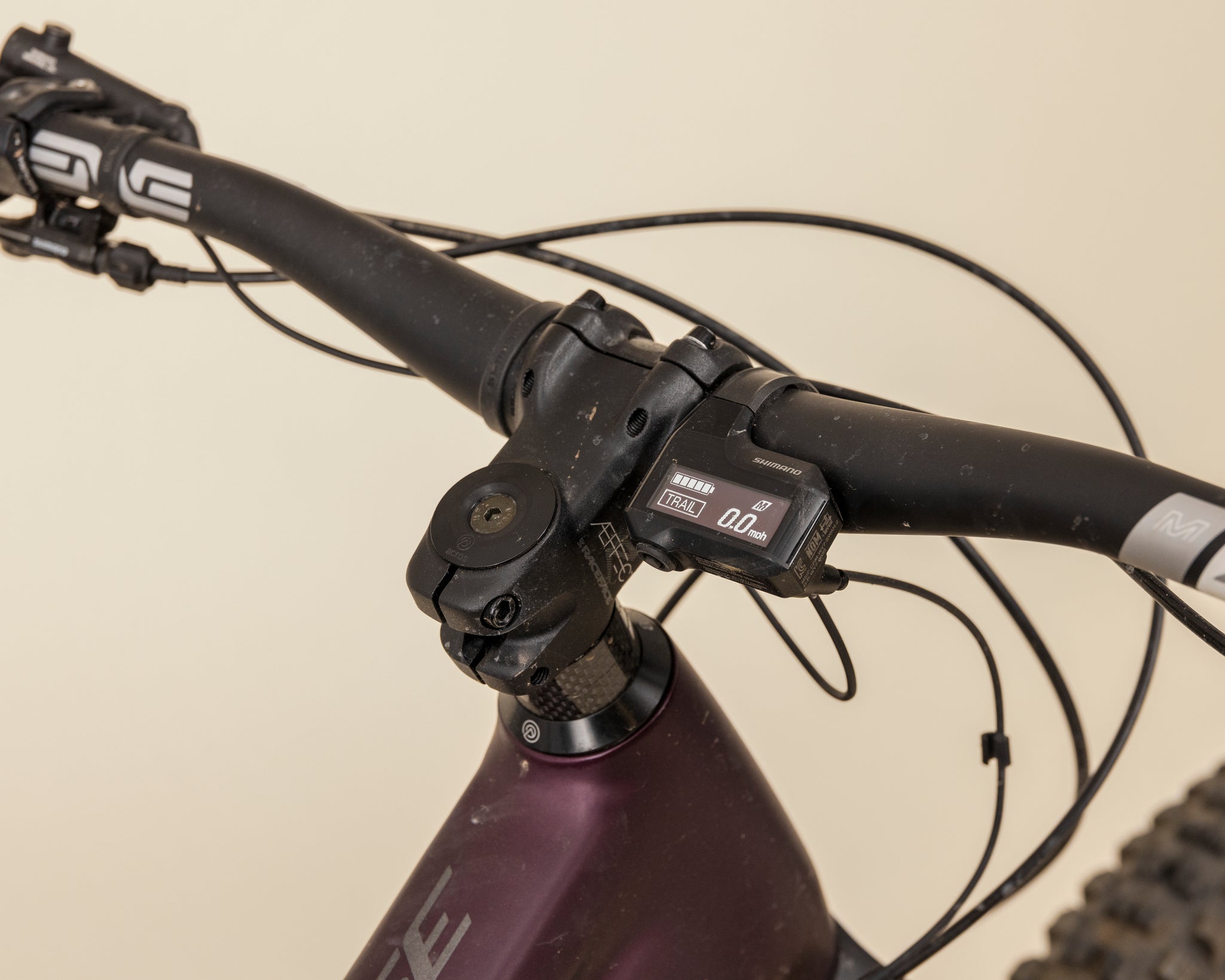

ENVE M7 MTN Handlebar 35mm Clamp Carbon Black
$190.00
I swapped out the alloy RaceFace handlebar for the familiar sweep and rise of ENVE’s M7s. The bar swap triggered my first gripe with the Rise. The electronic interface on the Rise is relatively clean, but there are some loose wires that are secured to the handlebar with some elastic bands. It’s not necessarily unsightly, but compared to the clean integration on Specialized Kenevo SL, it can be improved.

WTB Volt Saddle Medium Cromoly Black
$49.99
I’ve become accustomed to WTB’s Volt saddle which doesn’t have the aesthetically pleasing look of an Ergon or Fizik, but is hard to beat when it comes to comfort.

Vittoria Mazza Race Enduro 1C G2.0 29" Tire 2Ply Tubeless
$103.99
With the saddle swapped, it was time to address the tires. The H15 comes with Maxxis Recon 2.4 3CMaxxTerra Exo+ which may be suitable for milder trails, but inadequate for the rugged rocks found on the Front Range. So, I chose the Vittoria Mazza Enduro 2.4. Vittoria has been pushing their way into the gravity sector and I had heard great reviews on the durability and grip of the Mazza Enduro.
Setting Up My Orbea Rise
As with all bikes, I start with the tires. In my experience, mounting inserts has been a “battle-to-the-death” existence, inflicting deep-rooted PTSD.

Vittoria Air-Liner MTB Tire Insert - Single
$28.99
I’m happy to report that mounting the Vittoria Mazza 2.4’s paired with their Air Liner inserts was surprisingly uneventful, mending some of my psychological scars. With inserts installed, I set baseline air pressure to 18psi in front and 20psi in the rear.
Next was the suspension. Setting up the sag and ramp-up pressure was pretty straightforward. The RXF38 m.2 uses a three-chamber air spring. The main spring has a positive chamber above the piston with a negative chamber below. There’s a transfer port to equalize the pressures, resulting in a similar spring curve for riders of varying weights. Ohlins employs a third ramp-up chamber that functions similarly to the volume spacers/tokens employed by FOX and Rockshox. Essentially the pressure in the ramp-up chamber reduces the volume in the main chamber to bolster progressivity. This feature is advantageous because it allows for a broader range of tunability and is far more convenient.
 Setting up the TTX22m.2 was painless as with most coil shocks. I purchased two coil springs of differing weights but chose the lighter of the two resulting in a 27% static sag. Ohlins has very useful technical documentation for setting compression and rebound to the suggested factory settings based on your weight.
Setting up the TTX22m.2 was painless as with most coil shocks. I purchased two coil springs of differing weights but chose the lighter of the two resulting in a 27% static sag. Ohlins has very useful technical documentation for setting compression and rebound to the suggested factory settings based on your weight.
For the record, most suspension brands have impressive offerings at several price points. However, doing controlled bracketing is arguably more important than the level of suspension you purchase. If you’re not one to experiment and learn the cause and effect of the settings you should forego the top-tier offering(s) and invest your money elsewhere, like a battery extender or Beanie Babies. It’s an invaluable process that will improve both your riding and understanding of your bike’s behavior.
As mentioned, the Rise H15 falls into the “lightweight” E-bike category. When heaving it onto the hitch rack, it honestly doesn’t feel much heavier than my Norco Range beefcake. With its sleek profile and brawny fork, it’s easy to mistake the Rise for an acoustic bike, but it’s far better.
Riding the Orbea Rise on the Trail
 With a press of a button, the RISE comes to life, ready for action. A thumb toggle scrolls through four power modes illuminated on the display: OFF, ECO, TRAIL, and BOOST. The level of assistance ramps from a mere mortal to the heroic power and stamina of Martin Maes. Said differently, the Shimano EP8-RS motor has a very natural, authentic feeling. It's an experience akin to riding an “acoustic” ride, just with much better legs.
With a press of a button, the RISE comes to life, ready for action. A thumb toggle scrolls through four power modes illuminated on the display: OFF, ECO, TRAIL, and BOOST. The level of assistance ramps from a mere mortal to the heroic power and stamina of Martin Maes. Said differently, the Shimano EP8-RS motor has a very natural, authentic feeling. It's an experience akin to riding an “acoustic” ride, just with much better legs.
Climbing on the Rise turned monotonous fire roads into full-blown motorways and technical lung-busting single track into confidence-inspiring thoroughfares. The Rise still requires you to earn your turns, it just allows you to do much more of them.
Be that as it may, my indifference for E-bikes isn’t rooted in the climbing, but rather the lethargic and unwieldy feel on the descents. This was a non-issue with the Rise, which felt very much like descending on a "normal" bike. I attribute to the thoughtful geometry, reduced overall weight, and smart weight distribution. That said, I do believe that the bike’s true capabilities were elevated by the impressive performance of the Ohlins suspension.
I found that the RXF38m.2 had a very supple initial stroke, similar to that of a coil spring, but with markedly robust mid-stroke support. The fork kept the geometry in the sweet spot over ledgy, rough terrain but ripped through short, fast stutter bumps like a magic carpet ride. Surprisingly, I felt more confident and controlled descending on the 160mm Ohlins, than my more familiar 180mm Fox Factory 38. I attribute this to the extra mid-stroke composure, notably under braking.
The Ohlins’ muscular lowers and 38mm stanchions brought out the best in the Reynolds TR 309 Enduro hoops. Rather than deflecting across rock gardens, the Enduros seem to float with poise and predictability. The improved lateral support and durability from the carbon wheels help temper the additional mass of the E-bike, like a heat-seeking missile fixed on its target.
Out back, the Ohlins TTX22m.2 rear shock exceeded expectations and remained unruffled through the most difficult terrain. I was able to dial in my preferences promptly and with conviction as each click of the adjustable settings resulted in a noticeable difference in the shock's performance. This sort of certainty is invaluable for someone like myself who would prefer to be riding rather than bracketing.
The low tire pressure and improved grip form the Vittoria Mazza Enduro tires was most noticeable on technical climbs balancing both power and traction. Colorado experienced an abnormally wet spring and the Mazza Enduro Pro seemed to be in their element in the muck and mud. The wide tread pattern shed mud with ease, but the tall side profile felt somewhat vague until laid hard into the corner.
After a few rides, I gained more confidence in pushing the tire through the paces. The Mazza’s are rated for mixed terrain and they’ll certainly be my go-to in the wet, but I prefer the predictability of the Continental Kryptotal for the dry, rocky terrain Colorado is known for.
The Final Verdict
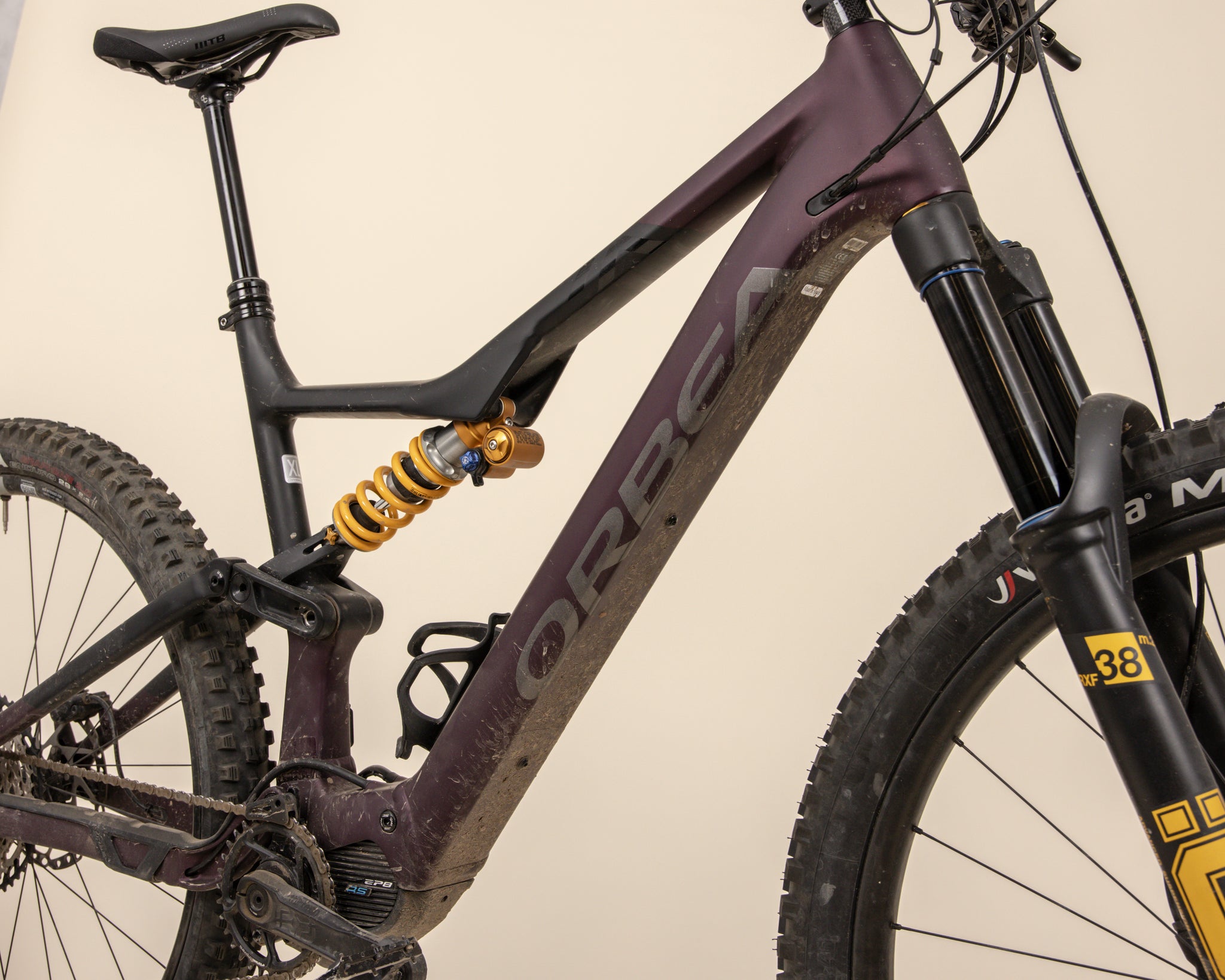 Despite my newfound infatuation, the bike wasn’t necessarily flawless. About three weeks into the testing the linkage began to creak which resonated through the alloy frame like a haunted mansion. As mentioned previously, Colorado had a relatively wet spring and the Rise certainly saw its fair share of rain and mud. I’m confident a pivot overhaul will eliminate this annoyance.
Despite my newfound infatuation, the bike wasn’t necessarily flawless. About three weeks into the testing the linkage began to creak which resonated through the alloy frame like a haunted mansion. As mentioned previously, Colorado had a relatively wet spring and the Rise certainly saw its fair share of rain and mud. I’m confident a pivot overhaul will eliminate this annoyance.
However, the irritating noise didn’t diminish my appreciation for the bike. I get more enjoyment from the Rise than any other bike, acoustic or otherwise. The bike has inspired me to tackle more difficult terrain, spend more time in the saddle, and explore new and more distant locations. It’s like the Rise unlocked a heightened gratification, and day after day I find myself reaching for the Orbea while dust accumulates on the rest of my stable.
Now that I’ve spent some considerable time on the bike I’ve started to think about what would make it better. I’m now dreaming of a similar lightweight platform with 170mm travel front and rear. Your move Orbea.





